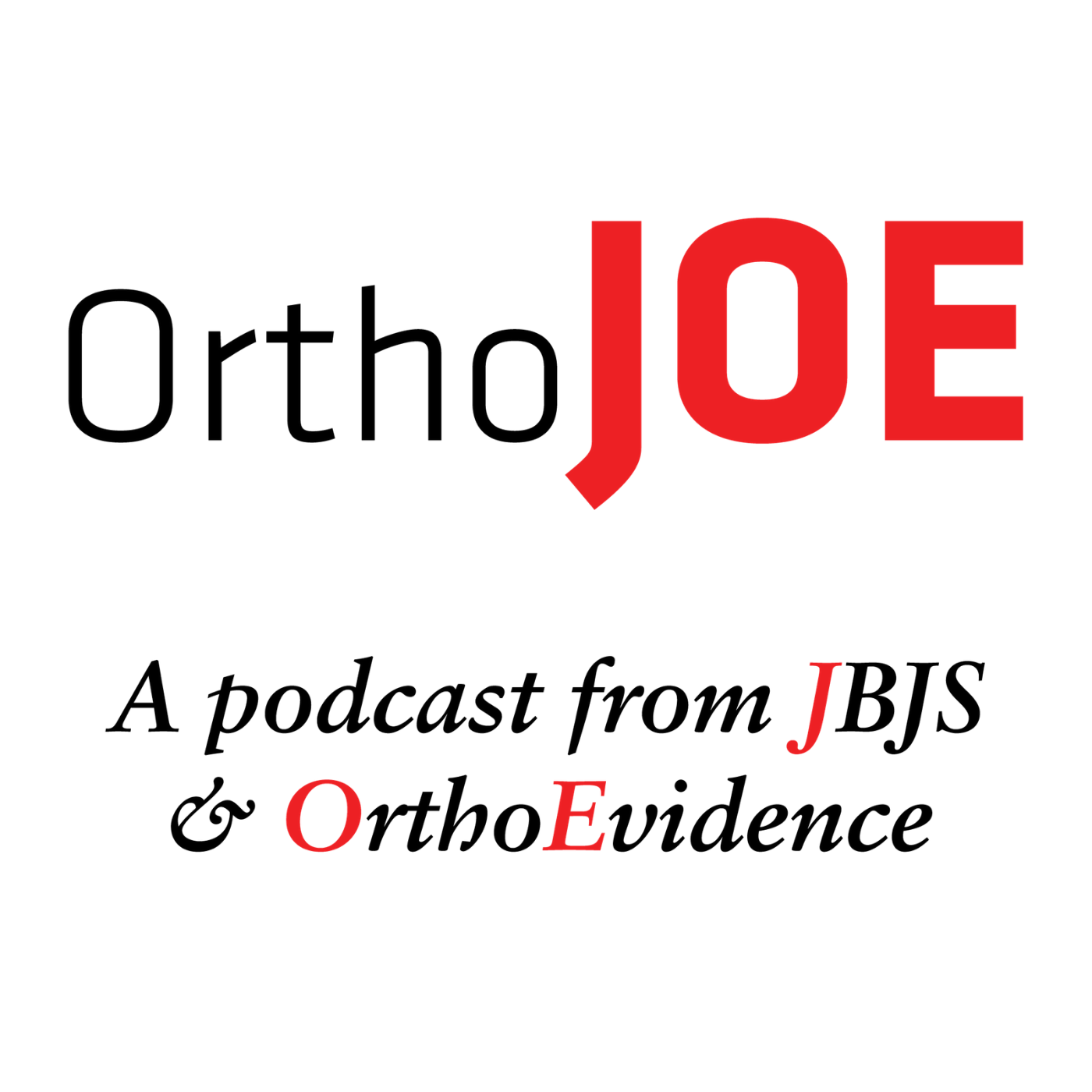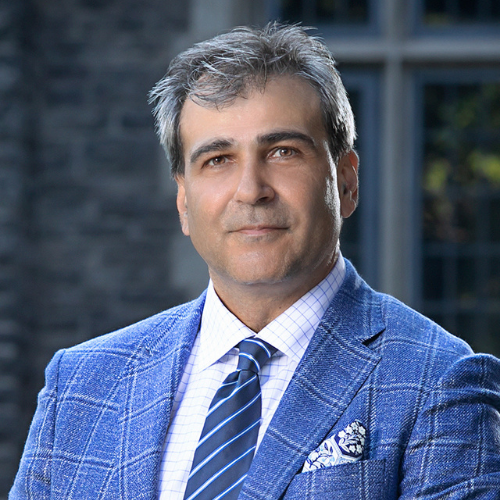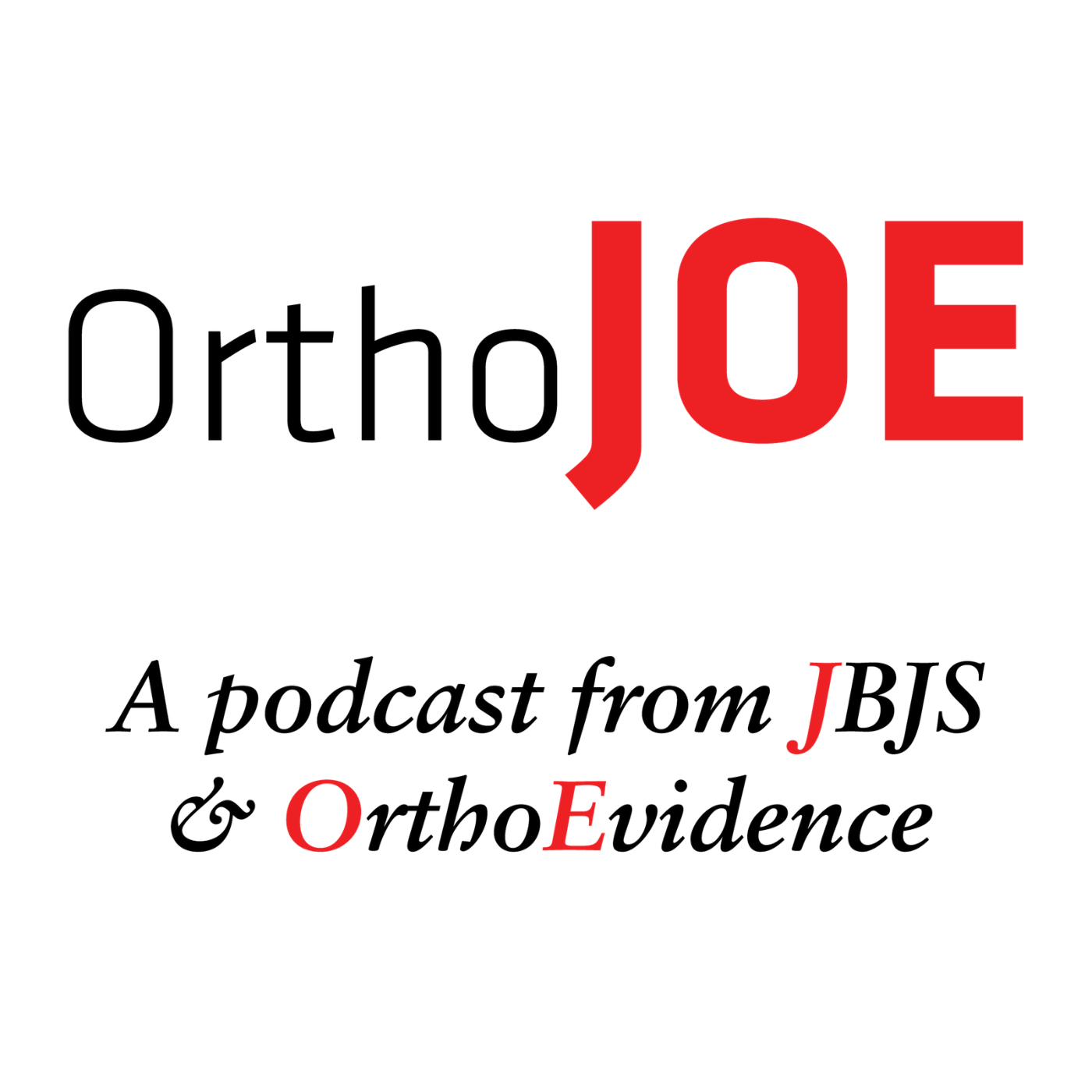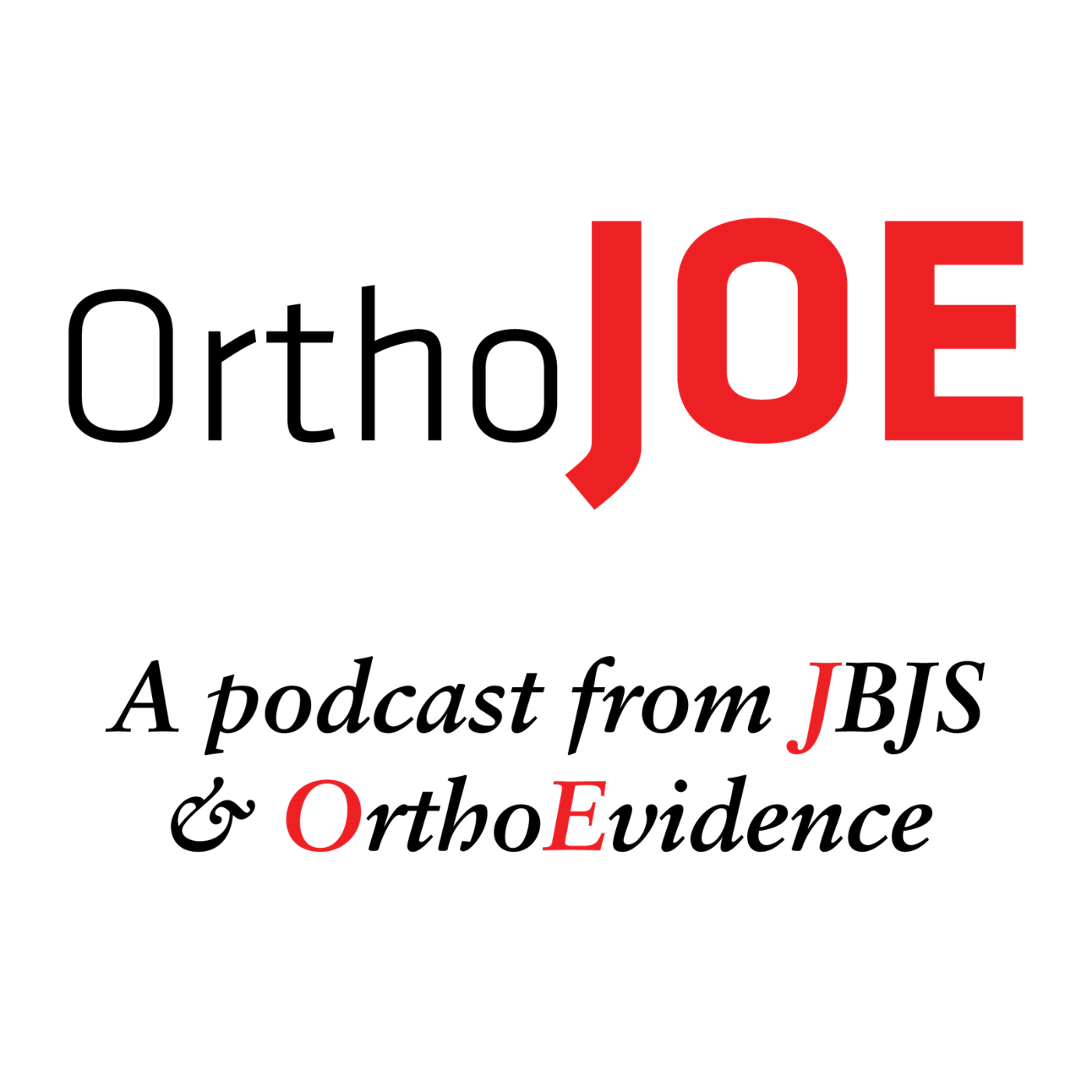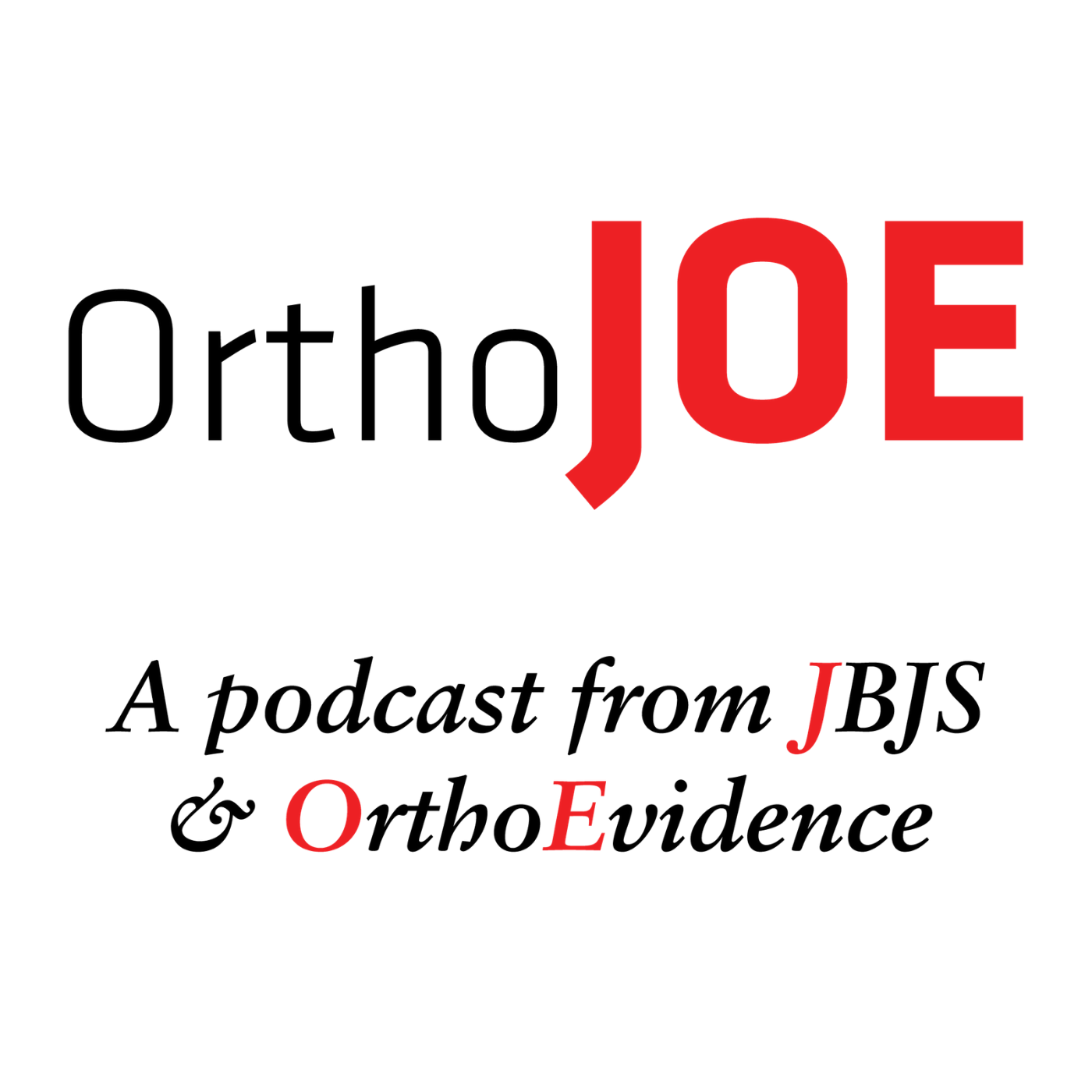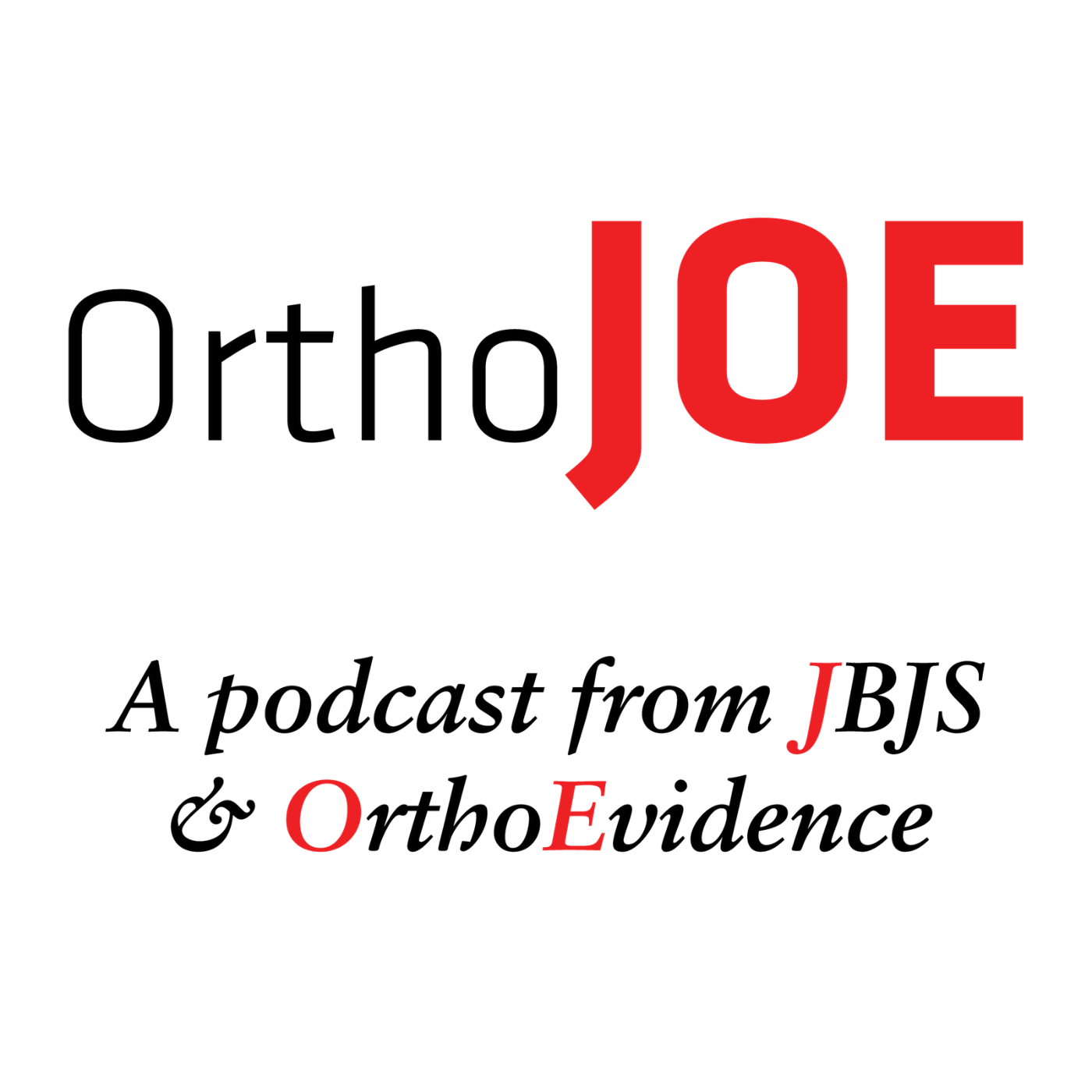Episode Transcript
[00:00:03] Speaker A: Welcome to the Orthojoe Podcast, a joint production of the Journal of Bone and Joint Surgery and Ortho Evidence.
Join hosts Mohit Bhandari and Mark Swankowski as they discuss current topics and publications in the world of orthopedics and beyond.
[00:00:18] Speaker B: Well, good morning Mark. Welcome to another episode. Boy, these things go fast and it's been a lot of fun today. We do have an interesting topic though, so I'm looking forward to hearing from you about was your decision to kind of choose this one. So I'm curious about your rationale and we'll, we'll tell a little bit more about it once you, once you give us a storyline.
[00:00:37] Speaker A: Well, thanks Mo and good morning. I. I understand you haven't been to Tim Hortons perhaps yet, but no, and I've already finished my coffee so we'll see if we can get through this. But I found this very interesting article that was published in the most recent journal.
I'm just going to read the title. Therapeutic Effects of Bovine Colostrum on Bone Healing, Rehabilitation and Postoperative Complications.
A prospective randomized double blinded comparative trial from our colleagues in Tehran, Iran.
This is a trial that is looking at the outcomes of patients with extra capsular hip fractures, a topic that you and I have some experience with. And they randomize patients to the use of this bovine supplement and then studied the fracture outcomes as well as the functional outcomes with the smfa. The three month postoperative complications.
Fairly well done trial I think I would suggest. But I'll ask you to comment on the quality of the trial.
They randomized 116 patients into the two groups. Equally balanced of course and their conclusion was that they have preliminary evidence on this trial suggesting that bovine colostrum may accelerate bone healing and enhance short term physical rehabilitation outcomes.
Two things were interesting. One is the intervention. I would have never thought of such an intervention.
Second is it comes from a group of investigators who are quite experienced from a country that's been in the news lately and I thought it was a good opportunity to just make sure our listening audience is aware we do at the journal double blinded peer review.
So there is no way that any influence on where the investigators are from who they are, etc. Similarly, the investigators don't know who the reviewers are and it's only the editorial folks at the highest level that know where it's from.
So that part I just wanted to get out just so everybody's clear how the journal is different than other journals and we do everything we can to limit bias in terms of review. But I'm going to just stop there and let you and our I'll let you introduce our guest who's been on before and have both of you talk about the intervention, if you would, as well as the quality of the trial. So I'll stop there and learn from you, too.
[00:03:23] Speaker B: Sure. So let me just introduce those of you who don't already know Professor Ted McLow. He's done a ton. His resume speaks for itself. He's been a champion for globalization broadly in orthopedics, has run some very, very important programs that I think most, if anything, have mentored. Ted, Just another hundreds, if not countless thousands of mentees that have been benefited from your work. So thank you so much. And you come to us from California, San Francisco. So, Ted, I mean, maybe I'll just start with you and appreciate you taking time this morning with us. Overall, you know, in this world that is trying to find the next super, I'd say the super innovation for fracture healing, how close are we in general? I mean, you follow this area very well, and maybe then we can kind of hone into this particular, you know, innovation.
[00:04:16] Speaker C: Well, first of all, it's fabulous to see both of you first thing in the morning. It's if I could do this every morning, I think I would. And Mo, thanks for the introduction. It's way overreaching, I think, but I know it's just a pleasure to be here.
So a couple of areas that I'm very interested in, as you pointed out. One is in fracture healing, and I spent the best part of my career, better part of my career, studying this on a basic science level.
And more recently, last decade, we've been doing much more, including with you, Mo, on clinical studies and trying to bring some of these things to the patient.
The sad reality is just like a lot of other things that we're studying, and we still don't have a cure for all the cancers and we still don't have a cure for blood bone healing is that we're still learning a lot on a basic science level, but we don't really have things that translate immediately.
And I found this article very interesting in that perspective because one thing we do have available are things like supplementation.
People can potentially get things that are over the counter, do things that are relatively easy, that may help promote bone healing. So there's evidence that oxygen might be helpful. There's evidence that calcium and vitamin D might be helpful in certain patients that have deficiencies in this. And these are just essential things that we can do now while we're waiting for that next big magic thing to happen.
I was at a conference recently, which I found extremely interesting because it was a multidisciplinary conference that had endocrinologists, physical therapists, physiatrists, orthopedists, and it was on largely geriatric fractures. And one of the messages that I took home are that oral supplementation can be important. I found some really pretty interesting things just listening to them, and that was that There is a 2 to 5% decline in muscle mass each day of bed rest. That 1% loss of bone density in the vertebral column can happen just after one week of immobility. And so getting. Getting people up and around is really important. The other thing is this concept of osteosarcopenia, which implies that as we age, we have to pay attention to the muscle and the bone, which mobility then, therefore is an important issue, but then so are the things that help both muscle and bone. And in this study, the colostrum is quite rich in proteins.
It's kind of like trying to decipher PRP when you read the article, because they say, well, it can do this, it can do that, it can help bone cells. It can. In a matrices form, maybe, maybe that's true. And in isolation, any one of those things. Because bone healing is such a broad thing that requires many different factors in continuity and can get derailed along the way as you go from stem cell to actually mature bone cell. But what you can do is if you have supplements that, you know, have. Are rich in protein because one of their groups was whey, and the other one was this colostrum and vitamin D and calcium. That alone is good for both the muscle and the bone. And so the concept that something like that might be beneficial is a great takeaway from this study. You could argue that the groups are pretty small.
And with aging, one of the biggest problems isn't even just the cells. Every component of fracture repair is affected with aging. So you have fewer stem cells. These stem cells don't react as well to different factors. You have fewer factors. So all of those things can contribute. But the bigger contributor is all these comorbidities. And these groups may not have been big enough to decipher all those things, but what I took away from it is that, yeah, geez, this is probably something that we should think about more. I mean, this should be right on Dr. Swankowski's radar, being that he's been, you know, huge champion in bone health, that we should be Thinking more about these kinds of things and mobility stuff that's easy, especially in the lower resourced environments, that there may be benefits to it.
[00:08:32] Speaker B: Yeah, there's not much to add to that. That's, you know, my only concern always has been, is that, you know, one study of 100 patients, while really valuable, it's like a phase two program almost. Right. You've kind of shown a little bit of efficacy. Now you want to kind of roll it out into a larger population. And hopefully that's a call for others to try to reproduce these findings, which is always the way it has to be. You want to show that, okay, we can do it in different populations of putting the same treatment effect. But the one thing that has always perplexed me, Ted, is, you know, I think when early on, you know, we were, you and I were involved in some trials as we were with Mark, where, you know, you'd have some novel biologic, some novel therapeutic. And the first thing says, okay, what should be the model which we.
Hip fractures first on. Because hip fractures were just so complicated, they had so many other reasons why hip fractures would be problematic for designing a trial. So we'd always choose, oh, we should do a tibial shaft fracture. And that was the model. Oh, by the way, the current standard is a ream nail. The problem was the reaming was such a powerful source of healing that no biologic could ever really show better than that. And we learned kind of that reaming is pretty darn good.
Whatever we're trying to do is going to have to be something above and beyond that. Why do you think about the idea that the hip fracture was chosen? Totally makes sense in terms of morbidity, but it's a pretty hard model, you would think, to be able to show a benefit.
[00:10:00] Speaker C: Yeah, I had several thoughts on that, and your point's a good one. The way they're fixed, I don't remember in the article that they said how they fixed it, but that has an effect.
Reduction has an effect. The patient's fragility index perhaps has an effect.
The interesting thing also about the whey versus the colostrum was the whey group, and they wanted to give these patients some supplementation. They may have been following a previous study that looked at rowers, had a small number of rowers, and I don't know if that's how they chose the two groups, but whey. Also these. They have these protein supplements you buy over the counter. You have a lot of different things in there. So I don't know what the calcium supplementation was for that or the vitamin D, that's important.
The other thing is that they mentioned when they broke down the colostrum versus the way that the colostrum had twice as much protein per the amount that was being delivered.
And so does that have an effect? So there's a lot of things, as you mentioned, and you are a champion of having larger trials to kind of work through some of these things, but that would have been an important thing to put in there or to think about at least in a discussion, that there may be all these other factors fixed, the quality of the supplementation, control and mobilization as well as the pre fracture conditions. Now, getting to the point about hip fractures and tibias, we've both done studies using the same pharmacologic, comparing the hip and the tibia. In many ways hip fractures are way more important now in terms of the general population.
They're just more frequent than tibia fractures. And at one point we're running out of tibia fractures in all these trials that we're going on to actually study Tibet to get enough of them to study. But the tibia is just harder to heal typically and it's easier to read. So they use the Rush score here. And so in the tibia you use the rust score. And typically that might be easier to look at in a diaphyseal bone, look at the quality of the callus. Whereas it may be a little bit more difficult to do or it is a little bit more difficult to, in my view, at the hip.
[00:12:06] Speaker B: Yeah, I fully agree. Like the radiographic union scale for tibia, the rust was just based on four cortices. But when you're looking at a hip, we, we like the rush was kind of designed. I remember us going through this process some years back and it was hard like we had a lot more variability in the, in the Russia. That doesn't mean that you can't refine that. And certainly people have been using it after us, have probably figured it out a lot better than when we, when we introduced the, the idea. But you're generally correct. I mean, it's very hard to evaluate fracture healing in a hip through conventional radiographic means, let's say plain X ray, compared to let's say a tibia, which is much more easy because you got the cortices in which you can balance it on. Mark, from your perspective, just looking at hip as a model, what do you think about the complexities? I mean they found a difference against all that potential background noise of trying to Balance groups of hip fracture patients, which are hard in general because they have so many different potential things you might need to balance.
[00:13:03] Speaker A: Yeah, well, as you point out and you have so many times before about the issue of numbers, like so many things, we need large trials in this area.
And I would certainly agree with the issues with evaluating fracture healing radiographically, but I would argue that for the patient, the functional outcome is way more important. The patient oriented outcome measures or time to get up and go test or a six minute whatever is going to be way more important to judge the difference in the population for patients. And I would say for us as a surgical community, we don't really care if the X ray looks concerning, if the patient is functioning well and not seeing us because they're got a persistent limp and there's a lot of pain.
I just want to switch away from the methodologic issues in view of the fact that we all agree that we need a larger trial. And ask ted, who has spent decades doing trials in low resource countries, and ucsf other groups, Harvard have been working on these efforts. And Ted, do you think we're close to being able to doing multinational RCTs on questions like this? Are the networks robust enough that this might be time to try something like that for a question like this?
[00:14:29] Speaker C: Yeah, that's a fabulous question mark. And I do think we are. I think in fact we're working with Mo right now on Hip Attack 2 to try and implement it in a group that we've developed in Latin America through our association of Trauma Surgeons in Latin America Octoire group. And there's the same challenges though, so I think we're able to do it. One of the issues that has come up is that when with Hip Attack 2, for example, you have to look at certain lab values that may not be available in a lot of places where hospitals aren't willing to pay for them. And so that part is difficult. One example of an area of difficulty and something like a colostrum versus whey. I mean, I bet that's a super cheap intervention that would be available to these countries after the trial. Because that's the other thing is if you come up with an answer that's still not applicable in these countries, then it doesn't really provide much utility for them.
So understanding problems that are important to them and the solutions you come up with applicable to them are really critical. You do have to do like every other place, select your, choose your partners wisely. There's a lot of enthusiasm, but sometimes less ability to execute but we're here, we're doing them. We just completed a, it's a prospective observational study, but we were able to recruit close to 400 patients in eight different different countries.
And so JBGs may be seeing that article chrome across their desk, but it's here we've shown we can do it. Mo's been the leader in this in his group and it, the applicability, the generalizability, if you get the right question for the rest of the world, is more. And it's just incredibly impactful potentially.
[00:16:22] Speaker A: Yeah. Full disclosure, I chair the DSMB for Hip Attack too. So I'm familiar with the, the trial and of course, you know, you need troponins, but this would be a relatively even more simple trial. Just, just say, you know, the SMFA and the timed up and go test at three months and what a. That could be world changing. This sort of a difference was confirmed.
[00:16:48] Speaker B: Yeah, I think we're all saying the same thing in a way. Right. It's basically like frugal innovation is just that. Right. It's going to connect the world very quickly if it's, it can be accessed. There's huge value in, you know, finding something that, you know, that only a few people may have access to because of cost. But as we just heard, you know, ultimately, if we want to have a big impact, we're going to have to find a way to make that available to everybody to the extent that we can. And sometimes starting with the simplest of simple things as a way to incrementally show that you can have benefit, because any incremental benefit in hip fracture care, my goodness, it's a big, it's a big impact as a number, a numbers game in trauma, as we all know. So. But this has been great. I mean, I think this is exactly the kind of discussion I think that we want to have. And hopefully those who are listening in, if you have other ideas around some of these potential frugal innovations or ideas that you might want to take this forward, you should definitely contact the authors and hopefully we'll start seeing some larger collaborative work that might come out to either confirm and, or I guess refute what we've just seen in this paper. So thank you both for taking a bit of time out of your morning to join us on Ortho.
[00:17:51] Speaker C: Joe, thank you for the invitation.
[00:17:53] Speaker B: All right, thanks, Ted.
